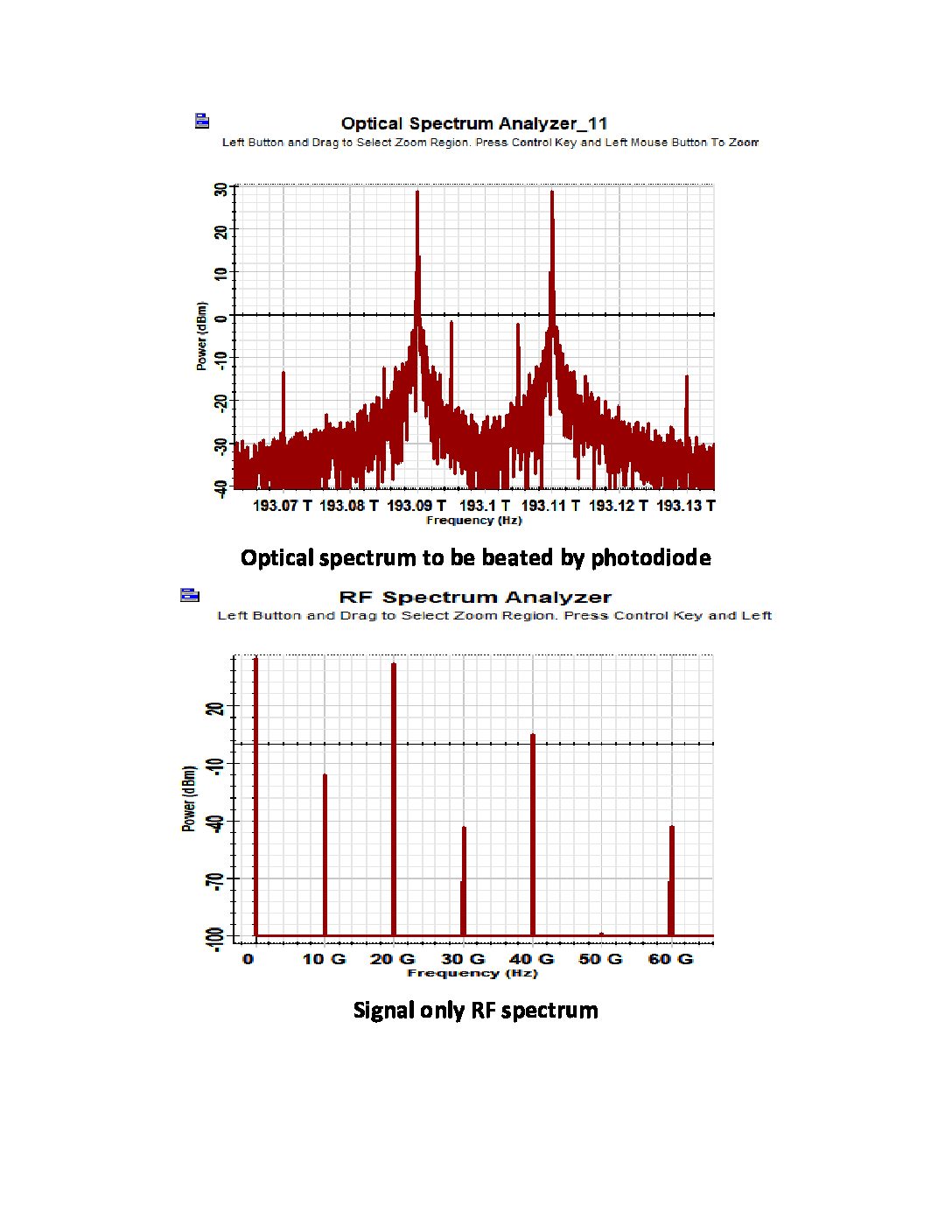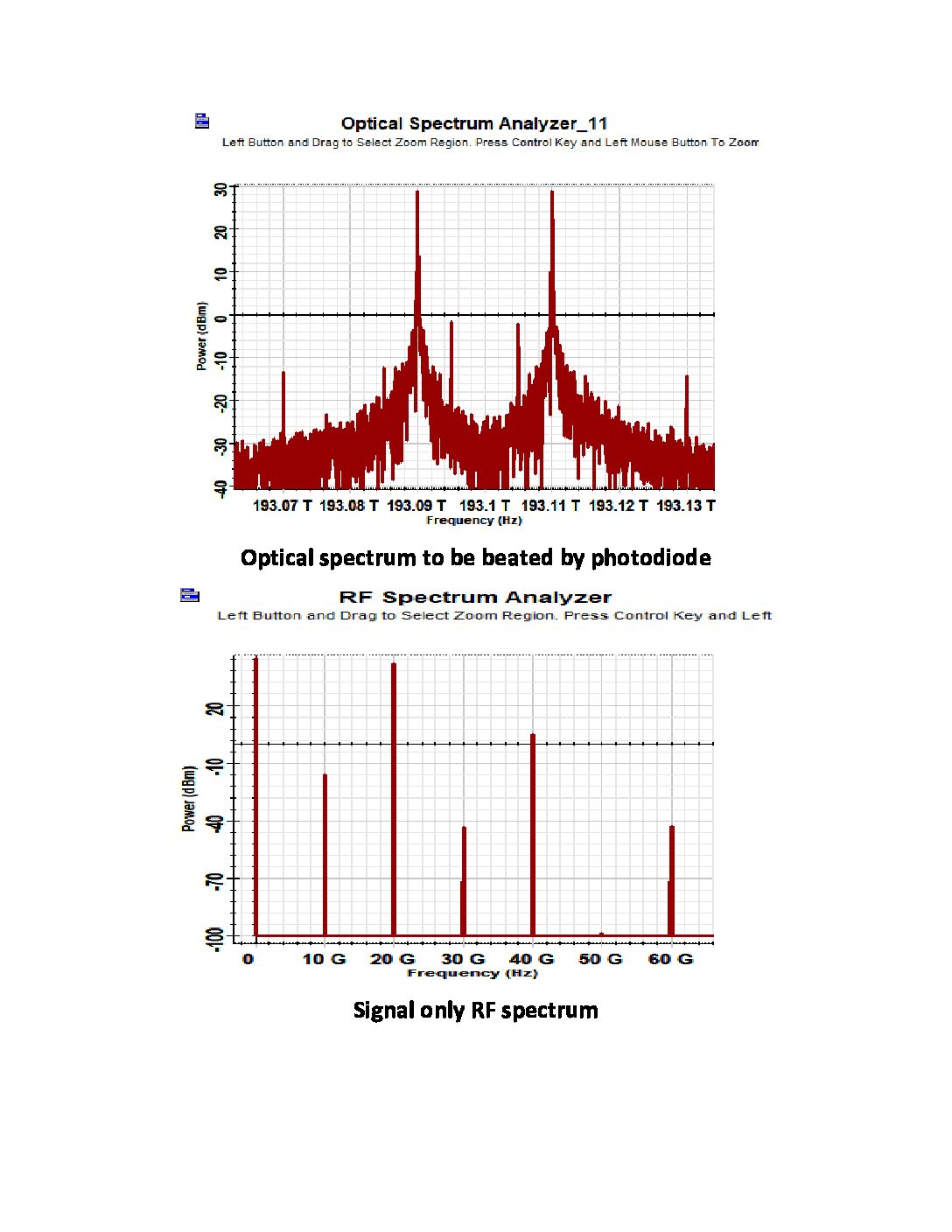Base
| Full Name | aasif bashir dar |
| Organization | iust awantipora |
| Job Title | student |
| Country |
Forum Replies Created
-
This reply was modified 4 years, 1 month ago by
 aasif bashir dar.
aasif bashir dar.
Very well Luis.. i have seen picture now.. it seems ok in power level… as far as phase of each optical spectrum is considered, such option is not available there.currently I do not have access to software however you can solve whole model theoretically.
As reference I am attaching a paper
See the phase of each optical spectra…. And check how the beating occurs at photodiode.. further have you used amplifier in link in case of fiber…. power of optical bands is not visible, there must be minimum threshold of power to generate electrical spectrum.
Respected sir,
Thans for you kind reply.
I guess what you indicated by arrows in the uploaded image are noise spikes. To prove my point, I have provided here signal only rf spectrum, noise only rf spectrum and combined spectrum.
The rf frequency bands in rf spectrum can not be justified by the optical spectrum of signal that is beated.
Kindly make me understand beating of what frequency bands resulted in 10Ghz signal.
Why 5 Ghz frequency signal is absent. Why 15 Ghz frequency is absent in Rf spectrum.
With regards
Respected sir,
Thans for you kind reply.
I guess what you indicated by arrows in the uploaded image are noise spikes. To prove my point, I have provide here signal only rf spectrum, noise only rf spectrum and combined spectrum.
The rf frequency bands in rf spectrum can not be justified by the optical spectrum of signal that is beated.
Kindly make me under beating of what frequency bands resulted in 10Ghz signal.
Why 5 Ghz frequency signal is absent. Why 15 Ghz frequency is absent in Rf spectrum.
With regards
Attachments:
go through the paper
read the paper below;
every technique is discussed
https://link.springer.com/article/10.1007/s11082-017-0944-4
dear concerned
“Chromatic dispersion compensation techniques and characterization of fiber Bragg grating for dispersion compensation”
search above in google.
or go to… https://link.springer.com/article/10.1007/s11082-017-0944-4
every technique is discussed in paper
Dear hayder ali.
To understand how fwm can be mitigated, you need to under what fwm is and how this occurs.
eg. A dispersive media has low fwm effects..
Becoz two photons with differents wavelenths travel with different speeds and hence are far apart to participate in any quatum interaction.
That is also a reason we never used dispersion shifted fiber becoz zero dispersion in fiber will lead to fwm.
Besides you can cpsk modulation to suppress fwm
With ragards
Sorry for late reply..
I my view opc is used for dispersion compensation… u can not solve problem of fwm using it….
With regards
well jalil ;
thanks for your concern(i think you have personally messaged me , but i would like share my thoughts here)….
i have not technically used multipont optimization (with confidence) till now… so i cant help you
i would rather suggest to optimize the single quality at one time…
with regards
you are welcome naba sabat;
http://dx.doi.org/10.1080/09500340.2016.1249974
http://dx.doi.org/10.1080/09500340.2016.1249974
visit above link directly
there is not seperate dcf block;instead you can use SMF in optisystem and change its parameters to form DCF
thanks for reply



